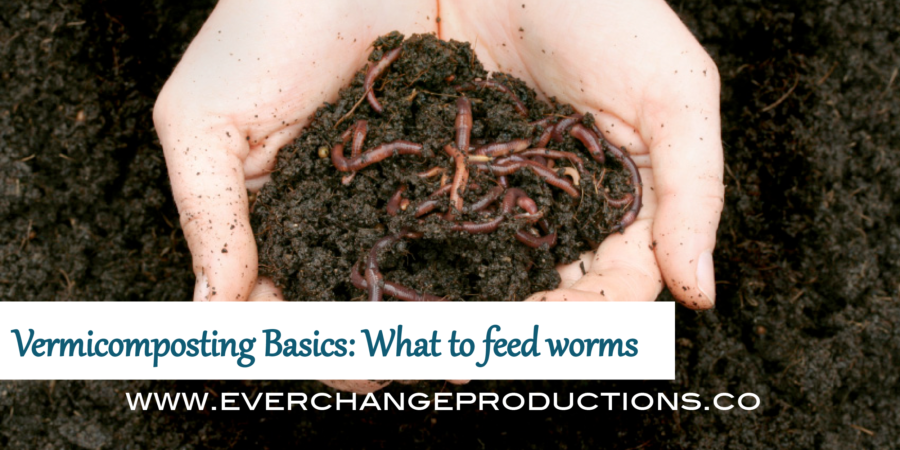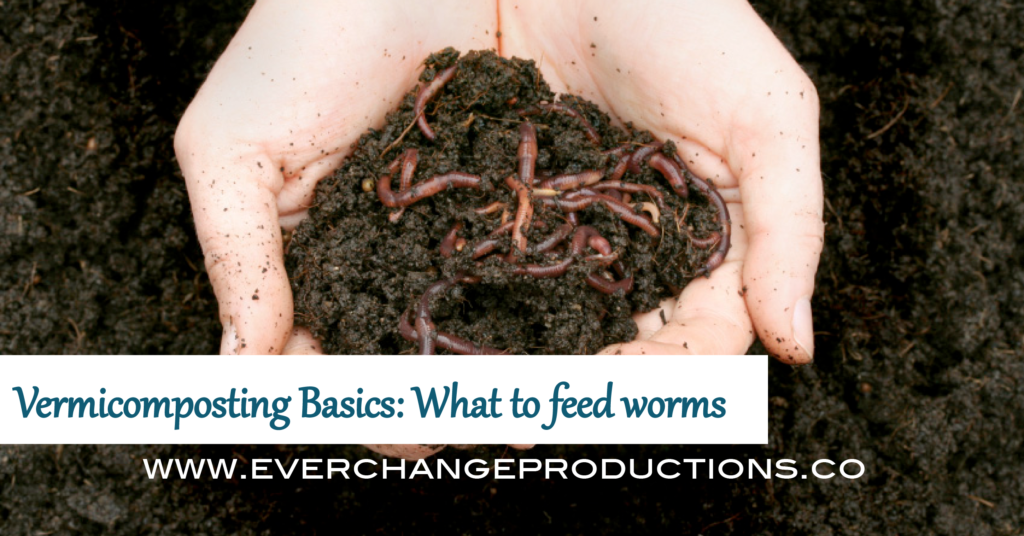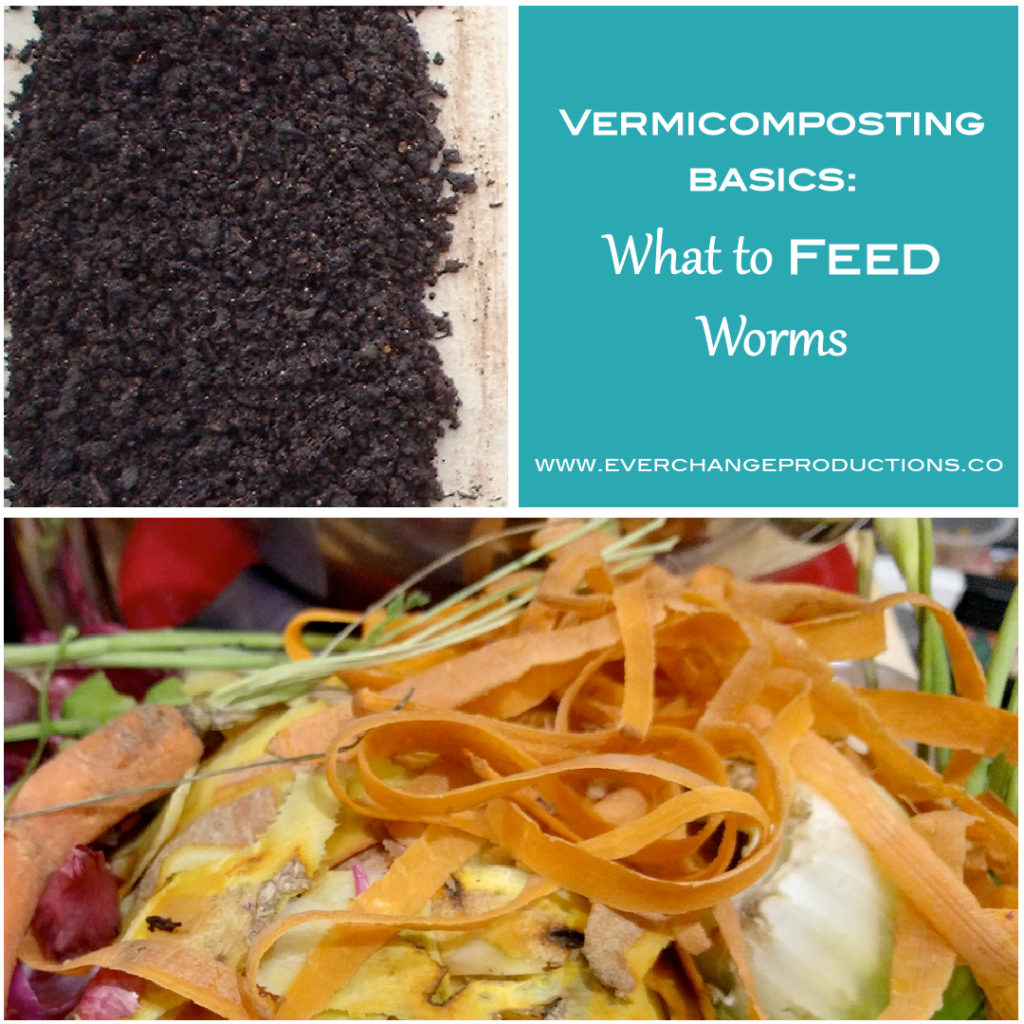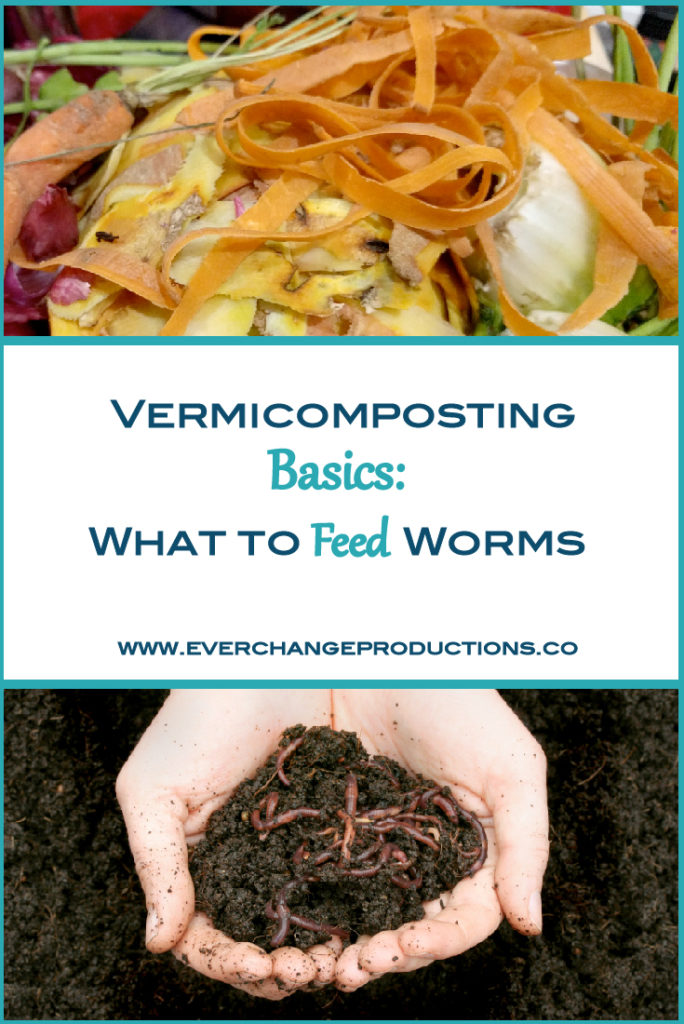Knowing what to feed worms or what not to feed them will make or break a worm bin. Vermicompost is an easy, efficient way to recycle food wastes into effective compost, especially if you live in a small space like apartments.
When setting up your worm bin, it’s best to start with bedding. Bedding is something the worms live in, but can also be used as food.
Ideal bedding materials include:
- Newspaper
- Brown paper
- Leaves
- Cardboard
- Wood chips
- Straw and hay
Shred all bedding materials before adding them to the bin and a combination of these materials make the best environment for happy worms.
When learning what to feed worms, there can be some conflicting information. Here is a list of my favorite tried and true materials to feed worms.
- Fruits
- Vegetables
- Squash/pumpkins
- Pasta
- Grains
- Mushrooms
- Eggshells
- Bread
- Tea bags
- Hair
You can add lawn clippings, but make sure they’re already dried out. Fresh clippings might heat up too much for the worms to handle.
Vermicomposting works differently than traditional composting. The goal isn’t to make it heat up for the microbes to do their work. The worms do the decomposing when they eat the food then digest it.
There should be a certain amount of grit because that helps the worms digest better. This includes dirt, coffee grounds and eggshells.
While some of these materials might be okay in traditional composting systems, worms need a couple of considerations when it comes to their diet.
What not to feed worms:
- Salty foods
- Spicy foods (peppers, onions)
- Foods with preservatives
- Dairy
- Oils
- Meat
Knowing what to feed worms or what not to feed them will make or break a worm bin. Keep these vermicomposting basics in mind when you start and maintain your worm bin!
If you’re still having problems with your worm bin, such as maintaining moisture levels or a weird smell, check out these common vermicomposting problems and solutions.
Check out this 2-part vermicomposting video series and learn how to vermicompost from start to finish!
Interested in composting, but don’t know where to start? Subscribe for access to a free quiz and find the best composting option for you.




[…] what to feed the worms in the composter is another great science lesson for […]